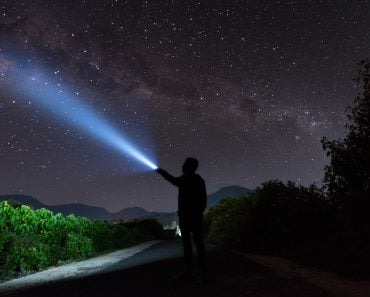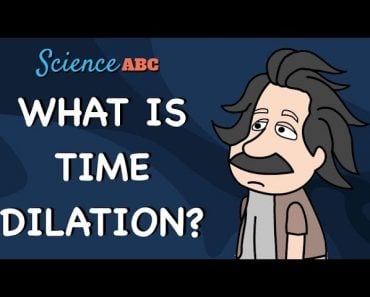Table of Contents (click to expand)
The problem with traveling at the speed of light is that accelerating to that speed takes a great deal of time and energy. It would take a few months to safely accelerate a human to that speed
How often do you gaze up at the night sky? When is the last time you stared into the vastness of space and were mesmerized by the faint white stretch of the Milky Way and the countless other stars that light up the darkness? While observing the night sky, have you ever dreamed of reaching for those same stars? Or sending ships all the way up into the cosmos to explore places beyond our solar system?

WARNING: If you’ve ever dreamed of reaching those far-flung places, you might not like what follows…
Let’s put things into perspective. Of all the stars in the sky, Proxima Centauri is the closest to our solar system. It is about 4.22 light-years away. Just to get some idea of how great that distance is, it would take NASA’s Helios 2 space probe, which is the fastest man-made object ever created, a staggering 19,000 years to get there.

Don’t lose hope quite yet. Humans are legendary for overcoming barriers and breaking records. And sure enough, there are some ingenious ideas to propel us faster than ever through the vastness of space.
Recommended Video for you:
Crazy Propulsion Ideas!
Project Orion definitely tops this list. In the late 1950s, a group of scientists began working on a rather innovative idea. Instead of using rocket fuel as a propellant, this space ship was powered by Nuclear Pulse Propulsion.
Project Orion was basically a tower-shaped spaceship with a flat plate at the bottom. This plate ejected nuclear bombs at a predetermined rate, so the rocket would then be propelled forward by the force of the explosion.

As bizarre as the idea of propelling a ship by detonating bombs behind it might sound, when tested with chemical bombs, the concept actually worked!
This spaceship was designed to reach astounding speeds, and would reduce the time it would take to reach Proxima Centauri from 19,000 years to just 100 years! Despite being capable of reaching incredibly high speeds, the project was shut down due to the Nuclear Test Ban Treaty of 1963.
The Solar Sail
An even faster idea is the Solar Sail. These function like normal sails, but instead of using wind energy, they use the momentum of the photons emitted by the sun. If the required conditions are met, these sails are capable of reaching speeds of up to 10% the speed of light!

Referring back to the previously stated example, under the right conditions, the solar sail would reach Proxima Centauri in less than 45 years!
How Far Can We Get?
Clearly, we have managed to reach incredibly impressive speeds, but compared to the vastness of the universe – or even our own Milky Way galaxy – we’re moving at a snail’s pace.
To find out how far can we actually go, we’ll need to stretch the boundaries a little. For a moment, let’s enter the world of sci-fi!
It’s widely understood that the speed of light is the ultimate speed for any object with mass in the universe. However, what if we actually reach that threshold someday? While it sounds fascinating to travel at light speed, it would be a very different experience in reality.
To understand why, let’s perform a thought experiment suggested by world-renowned physicist Stephen Hawking.
The High-Speed Train!
Imagine a high-speed railway line built along the Equator. On it runs an extremely super-fast train. In fact, the train would be moving so fast that it could circumnavigate the Earth almost 7 times – every second! A train traveling that fast would be moving at about 99.99% the speed of light.

The train starts off with a few brave passengers on board. After that, things start to get a little tricky. From the perspective of the passengers, the train travels at the speed of light for an entire week. However, this train isn’t just traveling through space; it’s also traveling through time. Allow me to explain: once you approach the speed of light, the universe slows time down around you just enough to ensure that you never attain that speed.
The difference in time is very significant. What the passengers felt as just one week would actually be an entire century for the rest of the planet. The passengers literally bought “A ticket to the Future”. And unfortunately, it was only a one-way!
This phenomenon may seem a bit confusing at first, and may take a while to settle in. However, once it does, we realize the true ramifications of space exploration and traveling at the speed of light. Even if the human race advances to create rockets that travel at the speed of light, the astronauts onboard those ships would be taking a one-way journey to the future. A one-year journey aboard such a ship would send the astronauts thousands of years into the future. Even then, they’d still be just one-fourth the distance to Proxima Centauri!

It Doesn’t End There
The other problem with traveling at the speed of light is that accelerating to that speed takes a great deal of time and energy. It would take a few months to safely accelerate a human to that speed and the same amount of time to slow a human down. This is because humans can only tolerate a limited number of g’s. At best, trained fighter pilots can bear up to 12 g’s before passing out. The astronauts aboard such a fast ship would have to constantly bear the G force over a period of months, both while speeding up and slowing down.
Traveling through space is lonely. Furthermore, the fact that traveling through space at high speeds means that you’d also be traveling through time makes it even scarier. To add one more level of terror, the planet that those travelers return to after their journey would be completely different compared to the way it was when they left. Generations will have passed. The planet they return to would be very different from what they called home.
Fun Thought: Ever thought about how it would feel to live your entire life at that speed? It sure would be lonely, right? Maybe that’s how the Flash feels. His entire world might just be too slow for him. Maybe that’s why the Flash needs friends.
The one thing we know for sure is that the speed of light is the ultimate speed. However hard we try, we’re always going to be restricted by that universal constant.












